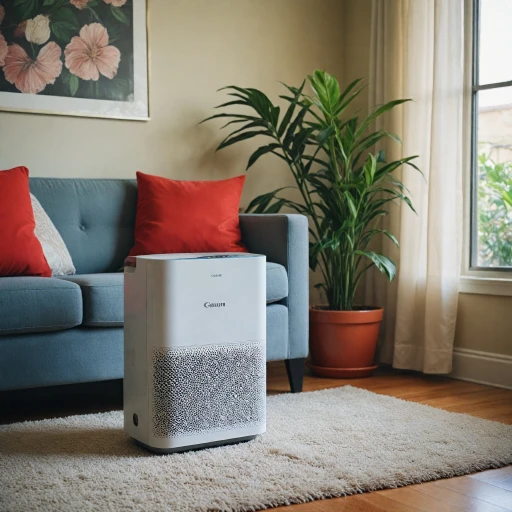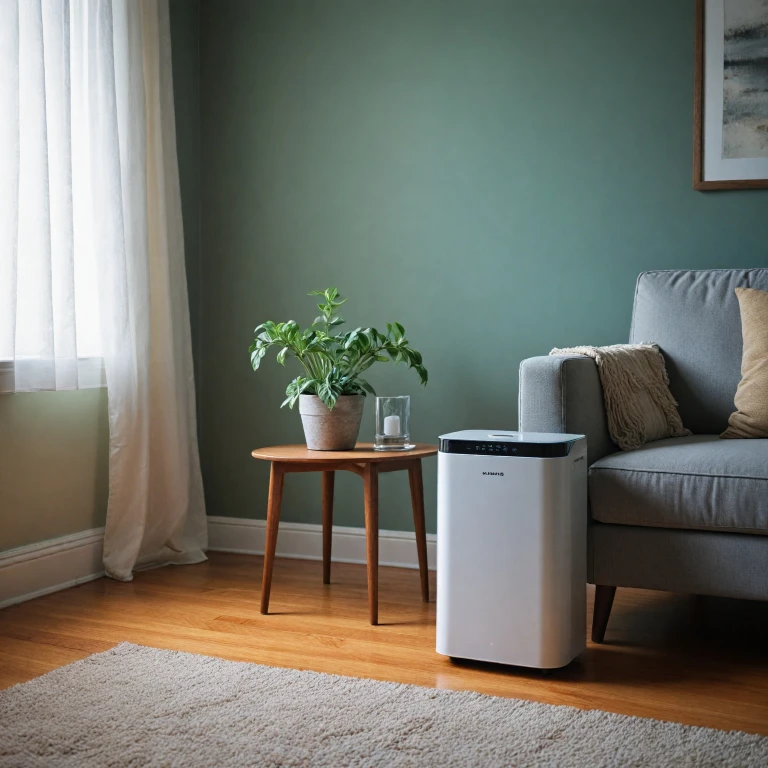Understanding Mold and Its Impact on Health
Impact of Mold on Health and Environment
Mold is a common issue that often poses significant health risks when left unaddressed. When discussing mold, it's essential to understand what it is and how it affects both human health and our living spaces. These microscopic fungi can flourish in damp and humid areas, releasing mold spores into the air, which can become airborne and circulate throughout indoor environments.
Exposure to high levels of mold spores can trigger a range of health problems, particularly in individuals with respiratory conditions or weakened immune systems. It can cause allergic reactions, asthma attacks, and other respiratory issues. Maintaining clean air in your home is crucial to reducing these risks, and this is where air purifiers come into play.
Air purifiers can help with mold issues by capturing mold spores along with other airborne particles. Utilizing advanced HEPA filters, these devices can enhance indoor air quality. While air purifiers provide a solution, addressing the source of mold growth, such as excess humidity, is equally important to prevent future occurrences. For those interested in a broader view of air quality solutions, understanding the benefits of living without an air purifier might offer additional insights:
Understanding the Benefits of Living Without an Air Purifier.
How Air Purifiers Work Against Mold
Mechanisms of Mold Filtration
Air purifiers are frequently utilized to combat the pervasive issue of mold within indoor environments. These devices work by capturing airborne mold spores, which are tiny particles that can adversely affect health and air quality. Here's how they operate:
- HEPA Filters: High Efficiency Particulate Air (HEPA) filters are considered one of the best defenses against mold. They are designed to capture 99.97% of particles as small as 0.3 microns, which includes most mold spores. The use of a HEPA filter ensures cleaner air by significantly reducing the concentration of airborne mold in a room.
- Activated Carbon Filters: These filters help with eliminating odors and certain volatile organic compounds associated with mold growth. Although not as effective as HEPA filters in capturing spores, carbon filters can contribute to improving air quality by absorbing airborne smells and chemicals.
- UV Light Technology: Some air purifiers incorporate ultraviolet (UV) light, which can neutralize mold spores at a microscopic level. While UV light does not remove mold particles, it can make them inactive, decreasing the likelihood of further growth.
By using a combination of these filtering methods, air purifiers maintain high indoor air quality, removing mold spores and other airborne pollutants. This reduction in airborne mold can help prevent potential health issues linked to long term exposure. For optimal results, it's essential to choose a device suitable for the room's size and humidity levels, as excessive moisture can exacerbate conditions for mold development. For more insights on managing indoor humidity alongside air purifiers, consider exploring
enhancing indoor air quality with air purifier and dehumidifier combo.
Ultimately, while air purifiers are effective in filtering and reducing mold spores, they should be part of a comprehensive strategy that includes addressing moisture sources and ensuring optimal air circulation to fully manage mold issues in your home.
Types of Air Purifiers Suitable for Mold
Effective Tools in the Fight Against Mold
When tackling mold issues, not all air purifiers are created equal. There are specific types of filters that stand out in effectively capturing mold spores and improving indoor air quality.
- HEPA Filters: Considered some of the best for trapping mold spores due to their high-efficiency particulate air filtration. A HEPA filter is designed to capture very small particles, down to 0.3 microns in size, which includes mold spores and other airborne particles.
- Activated Carbon Filters: These filters help with odor control and can capture volatile organic compounds (VOCs) released by mold growth. Activated carbon can also assist in improving the overall air quality by removing indoor pollutants.
- UV-C Light Technology: Some purifiers integrate UV-C light that can help to further reduce mold spores and prevent them from reproducing.
The choice of air purifier can significantly affect its ability to tackle mold and maintain clean air in your home. Devices like the Coway Airmega are often highlighted as being particularly effective due to their combination of HEPA and carbon filters, suiting environments prone to high humidity and dust where mold tends to thrive.
Evaluating the Effectiveness of Air Purifiers for Mold
Assessing the Impact of Air Purifiers on Mold Concerns
Evaluating the effectiveness of air purifiers in combating mold is crucial for ensuring a healthier indoor environment. Mold spores, which are lightweight and easily become airborne, can disperse throughout the room whenever there's any disturbance. Addressing these spores is vital in preventing further mold growth and improving overall air quality. So, how well do air purifiers tackle this issue?
Firstly, the choice of filter in an air purifier plays an essential role. High-efficiency particulate air (HEPA) filters are renowned for capturing tiny particles, including mold spores. A purifier equipped with a HEPA filter can significantly reduce the concentration of these spores, thus helping to prevent their spread and contributing to clean air indoors.
Activated carbon filters complement HEPA filters by absorbing odors and volatile organic compounds that mold might emit. This dual-filtration system can enhance indoor air quality by removing both spores and mold-related odors – factors that are often overlooked yet essential for a comprehensive defense against mold.
However, not all air purifiers are equally effective. The room size, the purifier's clean air delivery rate (CADR), and the product's energy efficiency are considerations that affect performance. Select a purifier with a CADR suitable for your room size to ensure high efficacy in reducing airborne mold.
Long-term efficacy depends on regular maintenance and periodic filter replacement. Keeping the filters clean ensures continuous high performance, reducing humidity and secondary mold growth risks. Interestingly, some products, such as the Coway Airmega, have received positive user feedback for their robust air-cleaning abilities and energy-efficient designs suited for larger spaces.
Ultimately, while air purifiers play an important role, they should not be the sole solution against mold. Supplementing them with proper humidity control and addressing the underlying causes of mold growth can greatly enhance the indoor environment's overall air quality, making it safer and healthier for occupants.
Choosing the Right Air Purifier for Mold Problems
Choosing the Ideal Air Purifier for Mold Concerns
When shopping for an air purifier to combat mold issues, it's important to focus on specific features that address mold spores and optimize indoor air quality. Here are some essential considerations when selecting the best equipment to help with your mold problems:
- HEPA Filters: High-Efficiency Particulate Air (HEPA) filters are highly effective in capturing tiny particles like mold spores from the air. Make sure the air purifier you choose has a true HEPA filter to efficiently reduce airborne mold and dust particles.
- Activated Carbon Filters: These filters complement HEPA filters by absorbing volatile organic compounds (VOCs) and odors that mold growth can release. When evaluating air purifiers, it’s beneficial to select a model equipped with activated carbon filters for a more comprehensive cleaning approach.
- Room Size Suitability: Ensure that the air purifier matches the size of the room where mold issues are prevalent. Air purifiers are rated for specific room sizes, and using a model that operates beyond its recommended capacity may not effectively manage mold-related air quality challenges.
- Humidity Control: While air purifiers primarily target airborne mold spores, controlling indoor humidity is crucial to preventing mold growth. Consider a unit with an integrated humidistat for balancing moisture levels, or pair with a dehumidifier to optimize conditions.
- Long-term Durability and Maintenance: Opt for a purifier known for its durability and ease of maintenance. Check user reviews or manufacturer recommendations regarding filter replacement frequency and costs, which impact the long-term effectiveness of the unit.
Whether it's a high-end model like a Coway Airmega with advanced purifying technology or a simpler option with primary HEPA filtration, picking the right air purifier will aid in ongoing mold management. While no device can completely eliminate the potential for mold, maintaining clean air with efficient filtration will significantly contribute to reducing mold spore levels in your indoor environment.
Additional Tips for Managing Mold at Home
Maintaining a Mold-Free Environment
When dealing with mold, it's important to recognize that air purifiers, while effective, are only part of a comprehensive strategy for managing mold at home. Here are additional steps to ensure that your home remains as free from mold as possible:
- Control Humidity Levels: Mold thrives in damp environments. Use dehumidifiers to maintain indoor humidity below 60%, ideally around 30-50%.
- Improve Ventilation: Ensure that areas prone to moisture, like bathrooms and kitchens, have proper ventilation. Regularly open windows or use exhaust fans to reduce moisture levels in the air.
- Conduct Regular Checks: Regularly inspect areas susceptible to mold growth, such as basements and bathrooms, for visible signs of mold or musty odors. Address leaks or water accumulation promptly.
- Ensure Clean Surfaces: Regularly clean surfaces that can accumulate moisture and dust particles. A clean home is less likely to encourage mold spores to settle and multiply.
- Use Mold-Resistant Materials: Consider using mold-resistant products when renovating or building homes, such as mold-resistant drywall or mold inhibitors added to paint.
- Adopt Preventive Measures: Fix leaks in roofs, windows, or pipes right away to prevent water ingress, which can lead to mold growth.
Utilizing an air purifier with HEPA filters and activated carbon is beneficial, yet these additional tips are crucial for creating a healthy and mold-free home environment. Remember, prevention is key to avoiding long-term mold problems.

